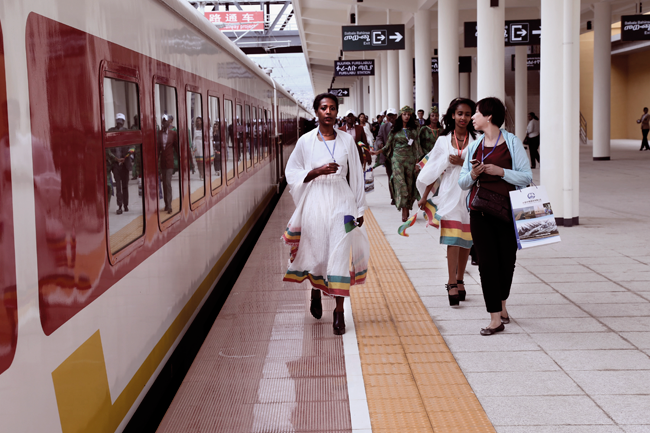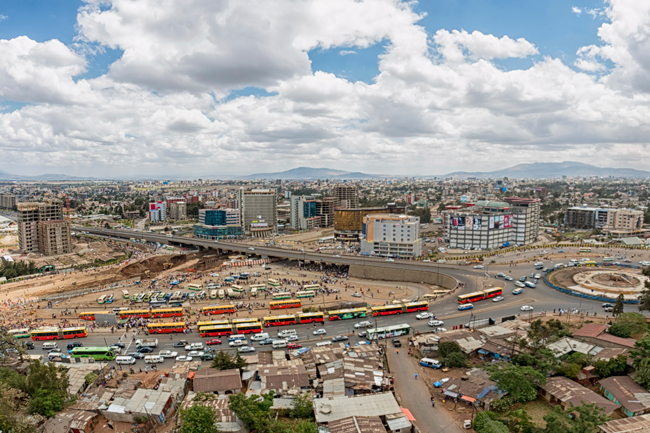In May 2017, the IMF confirmed that Ethiopia had overtaken Kenya to become East Africa’s largest economy. For those who remember the televised images of civil war and destruction that inspired the Live Aid concert of 1985, the country might seem an unlikely candidate for superstar growth. Yet that is exactly what it has achieved over the last decade.
Ethiopia is perhaps Africa’s most coherent nation state, having avoided colonisation other than a short period of Italian fascist occupation from 1935 to 1941. It has experienced every governing ideology the 20th century had to offer apart from liberal democracy – feudalism, absolute monarchy, fascism, radical Marxism and, since 1991, the sort of ‘soft’ development-oriented authoritarianism associated with Asian economic success stories, such as Singapore and (previously) South Korea.
Economic progress in Ethiopia is the result of deliberate policies, enacted by the ruling Ethiopian People’s Revolutionary Democratic Front coalition, which has been in power since 1991. These policies borrow heavily from the East Asian experience, including China. Public-led spending on infrastructure is at the heart of the country’s approach, with road construction, railways and power-generation plants having surged in the last decade.
Africa’s biggest hydroelectric project, the Grand Ethiopian Renaissance dam on the Blue Nile river was more than 60% complete at the end of 2017. Construction started in 2011 and the dam is on track to begin storing water this year. At an estimated cost of close to US$5 billion, the dam is expected to generate 6 000 MW of electricity on completion – almost tripling the country’s capacity.
Electricity is key to development in Ethiopia because it has chosen industrialisation as its development vector. Many developing country governments pay lip service to industrial development, but Ethiopia is unusual in that it is actually doing something about it. Eight huge industrial parks have been established across the country and are attracting investment from a range of specified development sectors – textiles, pharmaceuticals, apparel and food processing. The biggest country of origin for investment so far is a little surprising, Turkey, substantially ahead of China and India.
The 2016 World Bank publication, Ethiopia’s Great Run: The Growth Acceleration and How to Pace It, explains how Ethiopian industrial development fits into the global economy. Chinese industrial growth is slowing down as the country attempts to transition to a more consumption-based economy and as its recent past success makes it less competitive. Wages in China have risen to the point where it makes sense for Chinese companies to ‘off-shore’ production to lower-cost jurisdictions such as Vietnam and the Philippines. Ethiopia has deliberately set out to capture a portion of those processes.
Leather footwear manufacturing is an area where Ethiopia has achieved success. The country has built on the sector as it had a previous comparative advantage. Much of Ethiopia is pastoral and it has the largest livestock herd in Africa (54 million cattle). This means that leather footwear hits all the buttons listed by economists when it comes to the sort of sectoral growth that’s been attained so successfully in East Asia. Resources are available; labour intensity can be achieved using the country’s cheap and compliant labour force; linkages to agriculture are in place; and the sector has export potential and is characterised by relatively low technological entry barriers.
One major investor is the Chinese shoe manufacturer Dongguan Huajian Group, which – in 2012 – shifted production from Southern China to the Dukem Oriental industrial park, around 40 km south of Addis Ababa. The company now makes some 2 400 000 pairs of shoes every year for the US market. Brands for which it manufactures include Naturalise, Nine West and Guess.
In 2017, it was reported that the Chinese company had shifted production of Ivanka Trump’s branded footwear to its Ethiopian plant. The plant is run with a militaristic ethic, with team-building discipline exercises such as marching being conducted daily. Something of the flavour of the set-up is captured by the slogan written on the factory’s wall: ‘100% understanding, 100% co-operation, 100% obedience, 100% execution’.
The Ethiopian government has a policy of making investment in industry as attractive as possible. Land rent in the industrial zones is subsidised; it offers generous credit schemes to investors; 100% exemption from paying duties on imported capital goods and raw materials used for the production of exports; and a five-year tax holiday on profits.

Indigenous Ethiopian firms receive no such benefits. The World Bank’s Doing Business 2018 publication shows how the business environment is skewed towards foreign investors. Ethiopia ranks just 161 out of 190 countries for ‘ease of doing business’. It is best at ‘enforcing contracts’ (rank 68) and worst at ‘starting a business’ (rank 174) and ‘dealing with construction permits’ (rank 169). But of course the last two issues do not affect foreign companies that are incorporated elsewhere and accommodated in the industrial parks.
The difference in treatment between foreign and domestic companies is likely to be a future hurdle to deepening industrial development. It will prevent the emergence of business linkages, which may well result in foreign-owned enterprises remaining an enclave, with few domestic multipliers.
Ethiopia has a long way to go if the government’s ambitions are to be realised. The ruling coalition wants to see the country become a middle-income nation by 2025. While Ethiopia had an economic growth rate of more than 10% between 2005 and 2016 (a figure which declined to a still impressive 8.1% in the past year), it remains a poor country. Per capita income is US$660 and the average entry-level salary in the textile sector is between just US$35 and US$40. However, total GDP surpassed that of Kenya’s because Ethiopia has such a large population. In 2017, according to the World Bank, the country was home to 102 million people, making it Africa’s second-most populous country, after Nigeria.
The infrastructure-led development programmes are pressing ahead on other fronts besides electricity supply. A Chinese-built light-rail system was opened in Addis Ababa in late 2015. Furthermore, a 756 km electrified railway link between Addis Ababa and the neighbouring city state of Djibouti was opened in 2016, and began carrying commercial traffic in late 2017. This is a critical development as 95% of Ethiopia’s goods pass through Djibouti.
Tarred roads are being built on a large scale too. Three highways are under con-struction and will do a great deal to link the country to the rest of the world.
With so much emphasis on the state as a driver of development, it is notable that the country’s flagship business – Ethiopian Airlines – is government-owned. The airline is known internationally with routes all across the world, and has repeatedly won awards for being the best airline in Africa. In June 2017, the company announced an order for 10 new Airbus 350s. It has also set in motion a US$345 million project intended to expand capacity at Addis Ababa’s Bole International Airport from 7 million to 22 million passengers per year.
In some ways Ethiopia’s implementation of the East Asian model looks like a giant experiment. And so far it seems to be working. According to development economists, economic growth has – in almost every case – resulted in increased inequality as some individuals pull ahead more rapidly than others. But Ethiopia is busy confounding the conventional wisdom. ‘Unlike other rapidly growing economies, the country has not experienced a significant increase in inequality … even as poverty reduction occurred at a rapid pace,’ says the IMF.
There will no doubt be challenges ahead but for now a country that was once deeply mired in underdevelopment is proving to be a beacon of hope for a new style of capitalist development in Africa.


